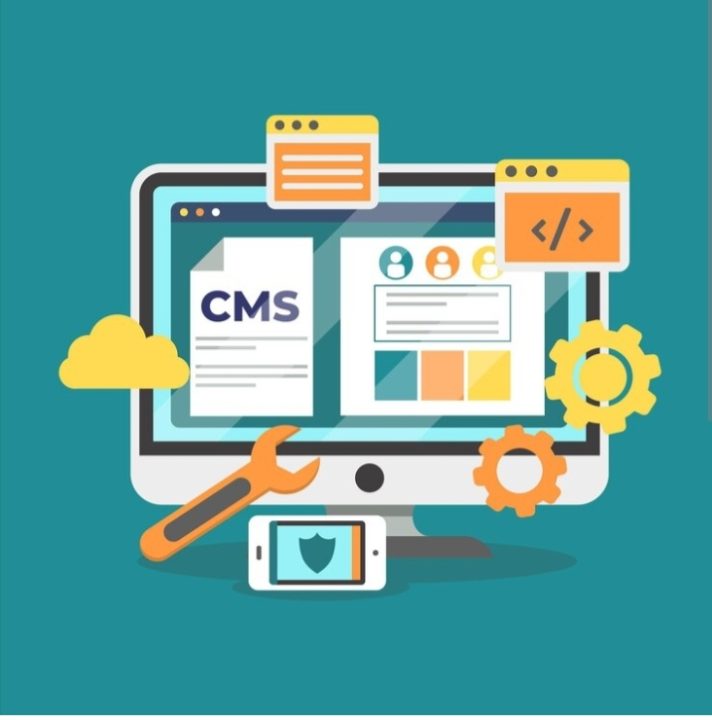Web CMS is a website whose framework is provided by a certain platform, but can be customized yourself. We can customize the website to be premium, through provider integration. Whether in the form of a custom domain, hosting, templates, plugins, and the like. Moreover, there are features that make it easier for us to design the appearance of the website.
Namely, by utilizing the drag and drop feature on the landing page. Or, edit independent script code in JavaScript. Suitable for medium Web Developers, who want to be practical and effective. More friendly for use and development. So, for more details about Web CMS. So, immediately check out our presentation from UpGes below, Guys!
Key Web CMS Components!
Web CMS has important main components. Of course, it becomes a composition where we can use its function. Namely, as a platform for building friendly and professional blogging sites. So, here are some of the components, including:
- Content
All forms of information, presented on the website. Includes text, images, videos and other files.
- User Interface (User Interface)
Part of the CMS, which interacts directly with the user. Makes it possible to manage content, without the need for coding.
- Databases
The place where all digital content, user data and website settings are stored.
- Admin Panel
Backend area of the CMS, useful for Administrators. Namely, it can manage all aspects of the website. Starting from content, to user settings and security.
- Templates and Themes
Visual design and layout on the web. Useful, to be adjusted and changed as needed.
- Web CMS Functions and Main Features!
Web CMS has various important functions. Important in building a blogging site. There are many uses, from which we can feel the benefits. So, here are some of its functions, including:
- Content Creation and Editing
There is a text editor feature, which is friendly (Rich text editor). Useful, can create and edit content easily.
- Media Management
Manage images, videos and other files that will be used in content.
- User Management
Set access levels and permissions, for different users.
- SEO Tools
Tools for optimizing content, on search engines. So that it is easier for your audience to find you on the internet.
- Template and Theme Settings
Allows changes to the design and layout of the site. Without having to change existing content.
- Extensions and Plugins
Adding additional functionality to the CMS. For example, contact forms, photo galleries, and social media integration.
- Versions and Revisions
Track changes to content, and rollbacks to previous versions.
- Types of Web CMS!
Web CMS has various types. Of course, according to the category on the platform. We can choose it, according to our needs. So, some types include:
- Open Source CMS
A system whose source code is publicly available and can be modified. Examples: WordPress, Joomla, Drupal.
- Proprietary CMS
Systems developed by specific companies. Typically, it requires a license to use. Examples: Adobe Experience Manager, Sitecore.
- Software as a Service (SaaS) CMS
A cloud-based CMS, provided as a subscription service. Examples: Wix, Squarespace.
Benefits of Using a Web CMS!
Web CMS offers various advantages, which we can enjoy. Both practically and effectively, as well as professional blogging functions. So, here are some of the benefits of using it, including:
- Ease of Use
Does not require in-depth technical knowledge to manage content.
- Collaboration
Multiple users can work on the same project simultaneously.
- Time and Cost Savings
Reduces the time and costs required for website development from scratch.
- Flexibility and Scalability
Easily add new features, and scale the website. Of course, according to business needs.
Examples of Popular Web CMS!
Web CMS has various examples, which are popular ones we use. Of course, it is a recommendation for those of you who are starting to enter this field. So, you don’t make the wrong choice. OK, here are some examples, including:
- Blogger.com
Blogger.com is one of the most popular CMS in the world. As a product from Google, in the field of blogging. Of course, with the largest number of users. Because it has friendly features and appearance. Simple, but still answers our needs. Of course, in building a professional blogging site. We can also customize domains and templates. In fact, you can edit scripts in HTML. Moreover, because it is a Google product, it has strong protection in preventing cybercrime attacks.
- WordPress.org
WordPress is an open-source CMS, the second most popular in the world. Known for its ease of use, and extensive plugin ecosystem.
- Joomla
An open-source CMS that offers flexibility and scalability. Joomla is suitable for more complex sites.
- Drupal
Drupal is an open-source CMS, which is very powerful and flexible. Often used for large enterprise and community websites.
- Wix
Wix is a popular web SaaS CMS, with an easy-to-use drag-and-drop interface.
- Squarespace
A well-known SaaS CMS, with an elegant template design. Moreover, the built-in features are strong.
That’s the article from Us UpGes which discusses Web CMS. Relating to the main components, types, advantages, examples. So, it can be useful for you readers. Of course, in order to deepen skills in the field of web development and blogging. That way, it can support your career progress. OK Guys, that’s all from us and thank you.
